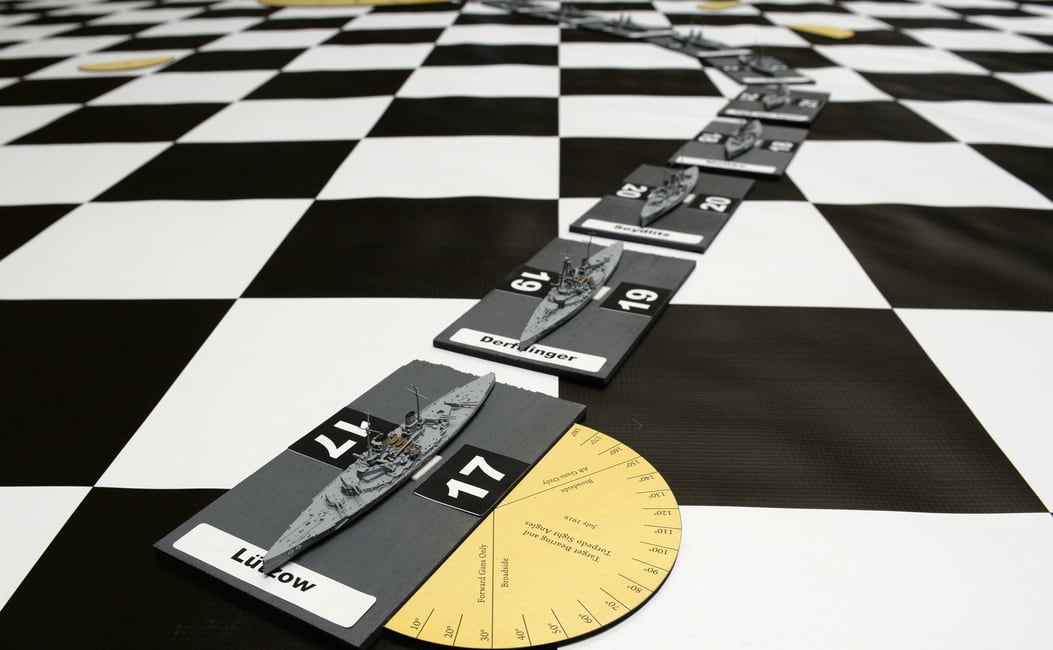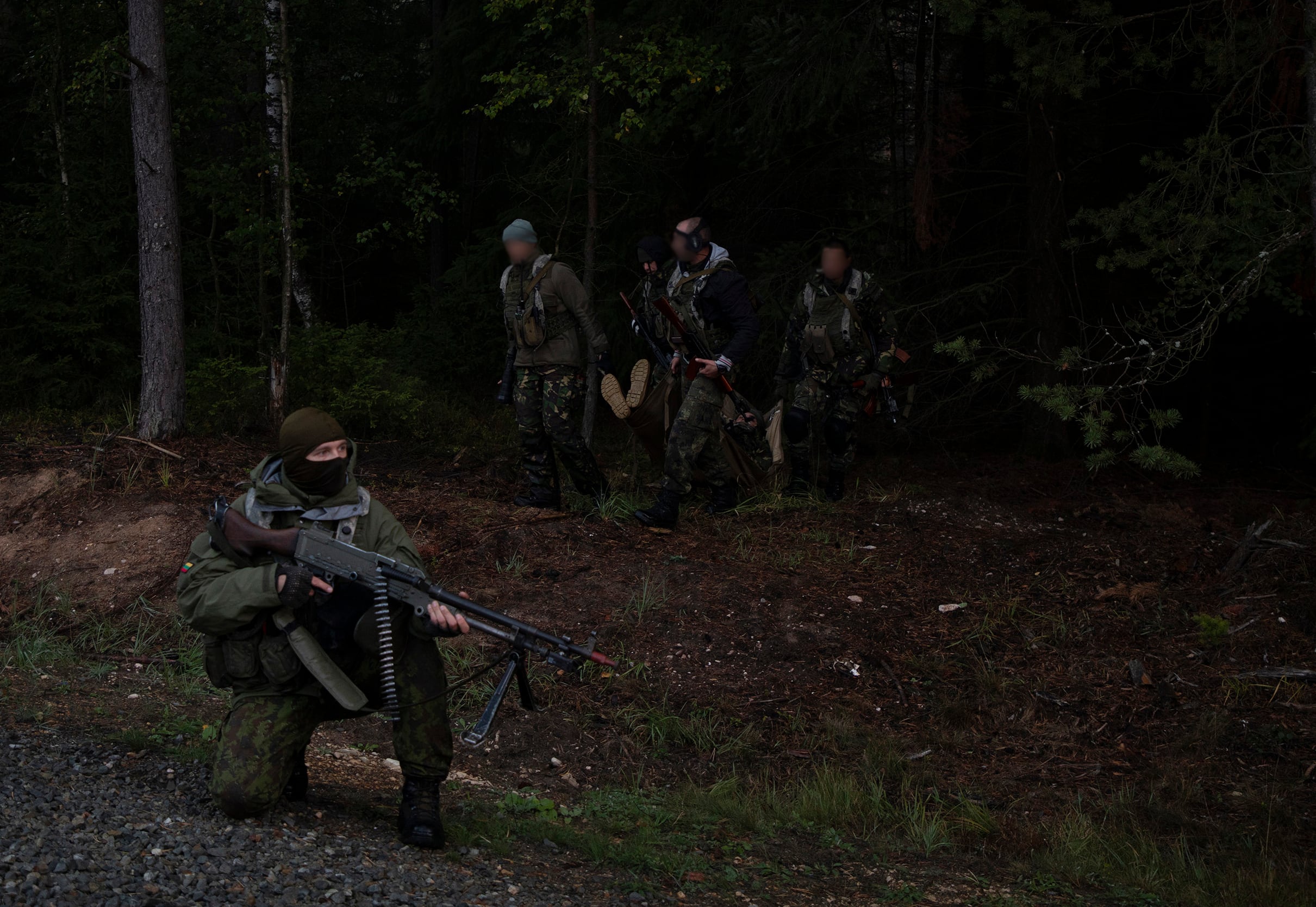During the first week of March, as the eyes of the world were on the valiant defenders of Ukraine, officers at the Army War College in Carlisle Barracks, Pennsylvania were fighting a war in Asia — admittedly, while keeping close watch on the war in Ukraine as well. Their mission: prevent the People’s Republic of China from gaining control of the South China Sea.
Well, that was the mission of half of the staff groups; the others, portraying China, were tasked to seize control of the South China Sea. Seminars composed of some fifteen officers compete against the seminar next door; the one we, the faculty teaching team, watched and mentored included a majority of active duty Army officers but also a Guardsman, a reserve JAG, two Air Force officers, a Marine, and a Department of the Army civilian, as well as allied officers from Montenegro, Nepal, and Pakistan. The opposing team portraying China had a roughly similar array of talent; most of the officers have about twenty years of service, including many with multiple combat tours in Iraq or Afghanistan.
RELATED

The game, developed by Army officers Lt. Col. Derek Martin and Col. Chris Hossfeld of the Army War College, is carefully calibrated so that each side has a roughly equal chance of winning a pretend war over the critical piece of terrain known as the South China Sea, with game pieces that replicate weapons systems including advanced missiles, aircraft, ships, submarines, Marine and army ground and air defense units, and Special Operations Forces. The Navy has used this same scenario to test and develop its latest warfighting concept; while the Army War College has used war games to develop the warfighting and war-winning abilities of its students for many decades, this is the first time it has tried this particular game.
The big idea? Officers, and particularly generals, do not often get to “practice” warfare at the operational level. Senior officers are usually are thrust into warfare where the stakes are highest but their experience in actual combat at that level is at its lowest. This is a chance to exercise and improve their judgement in the application of military power to achieve national objectives in a joint and coalition setting against a thinking adversary where decisions have consequences.
The experience validated the work that went into giving student officers the learning experience. Army colonels portrayed four-star admirals and three-star generals, using the same leadership skills on which they would rely in combat. A Pakistani officer played the role of an American State Department officer, working to build alliances with Southeast Asian countries that would then allow the United States basing rights on their territory and in their ports and airfields — and, ultimately, commit their troops to the fight.
Officers planned for the employment of weapons systems, carefully keeping aircraft carriers out of range of powerful anti-ship missiles while positioning intelligence assets and submarines where they would cause the biggest problems for our Chinese “adversaries.” An Air Force officer did the hard math on how far his fighter wings could travel and still return to base safely, and coordinated the orbits of refueling tankers inside the umbrella of American air defenses. An Army logistician ensured that the troops never ran out of bullets or fuel (Russia would kill to have him working for them right now), while an electronic warfare specialist coordinated cyber and space assets to ensure that American forces could see and talk while the Chinese forces struggled to do the same.
There were many lessons learned during the exercise, particularly given that it was being conducted even as we were all digesting the troubled Russian campaign in Ukraine; the primary importance of logistics was one obvious point. One that did not turn up in the Ukraine fight is the danger to U.S. aircraft carriers engendered by advanced ground-based missile systems that China possesses in abundance; the game indicated the possibility that carriers, which have ruled the waves for decades, may be receding in importance early in conflicts with near-peer powers, replaced by the invisible but lethal attack submarine. The Army War College is probably not the final authority on this particular question — but the officers we trained will be better informed when they engage in future force structure decisions in the Pentagon in their next assignment as a result of the work they did here.
RELATED

And that is, of course, the point of the exercise. This wargame was something of a capstone after six months of education and dialogue on the theory and conduct of diplomacy and war, on strategy and military operations, and on the leadership skills that turn material and soldiers (and sailors, and airmen, and Marines) into units that can fight outnumbered and win on any battlefield anywhere in the world. The officers of Seminar 21 — and their 350 or so brothers and sisters in two dozen other seminars — are now better prepared to take America’s most precious assets, our sons and daughters, into harm’s way to accomplish national security objectives. That matters far more than who won the wargame.
(We did. Better luck next time, Seminar 18! Blackjack!)
Michael Marra is a retired Air Force officer, John Nagl is a retired Army officer, and Joe Spinks is an active duty Navy submariner; they are the faculty teaching team for Seminar 21, the famed “Blackjacks”, at the Army War College.
The views expressed are those of the authors and do not necessarily reflect the official policy or position of the Department of the Army, Department of Defense, or the U.S. Government.
Have an opinion?
This article is an Op-Ed and as such, the opinions expressed are those of the authors. If you would like to respond, or have an editorial of your own you would like to submit, please email Military Times Managing Editor Howard Altman.
Want more perspectives like this sent straight to you? Subscribe to get our Commentary & Opinion newsletter once a week.





